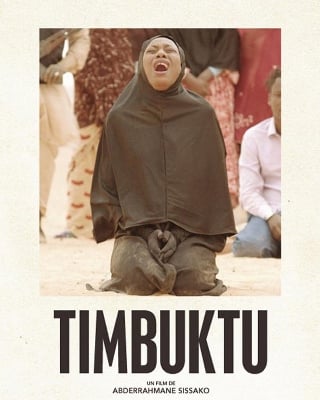LIFF28: Joe Piscatella’s ‘#ChicagoGirl’
December 29, 2014
[Image courtesy of Leedsfilm.com]
Given all the violence going on in the world at the minute, it can be easy to let certain examples fall from our collective memories. This is partly as result of media coverage, because as time passes, events will be deemed to get ‘less interesting’, and other stories will slowly start to take their place. However, Joe Piscaletta’s #ChicagoGirl has a clear aim in mind; to bring the uprising in Syria to the forefront of our minds and onto our screens so that the tragedy of what is happening there is not forgotten.
The girl in question is Ala’a Basatneh, a teenager in Chicago who through her use of social media helps to organise and assist the protestors in Syria. She acts as a hub of sorts, co-ordinating demonstrations and linking up groups so that their march will have a greater impact. However, along with this comes the responsibility to get the word out about the atrocities that the Assad regime is committing upon its own citizens, and so to that end she is also responsible for uploading the hundreds of videos she is sent that document both this violence and the acts of protest.
One thing #Chicago Girl is quick to make clear is how large an impact this responsibility has had upon Ala’a’s life. When we’re introduced to her, Ala’a is a college freshman living in the supposed safety of the Chicago suburbs, but it’s revealed that due to her dedication to this cause, her grades are starting to slip. What’s more, due to her involvement, pro-Assad groups have sworn violence against her, sending threatening messages and claiming they will come after her family. It’s a moving story, and an impressive display of bravery by one so young to risk her life like this for a cause she clearly believes so much in.
Through conversations with her, Piscaletta links to footage of Ala’a’s friends on the ground in Syria. It’s in these scenes that Piscaletta captures the real ‘spirit’ of the protest movement, using footage filmed during demonstrations to a rousing effect. The regime clearly knows the power that social media and online video can have, as gunmen have been ordered to shoot those with cameras on sight. Piscaletta doesn’t hesitate to show us this violence, and in fact several segments show bombs going off just feet away from where the cameramen are recording.
It is in these moments documented by real-life protestors that #ChicagoGirl becomes most effective. It’s hard to think of a better way to bring the horror of what’s going on to the minds of the world than by showing scenes of the kind of brutality Syrian citizens are experiencing. First hand footage from protests brings immediacy to events, and allows the audience to share in the panic when violence inevitably erupts.
Unfortunately, the fascinating subject matter is somewhat undermined by the film’s cheesy production values. There’s a lot of footage of computer desktops and little animations about scrolling down a Facebook feed, and while these are appropriate visuals for the content, they might have looked more at home in an online ‘guide to the web’. What’s more, it’s hard to avoid the feeling that some of these visuals detract from the matter at hand and almost cheapen it. When one minute we are hearing harrowing tales of bloodshed and brutality, to suddenly cut away to an infographic of computer screens lighting up in a digital mosaic robs the story of some of its weight.
#ChicagoGirl is a bold look at how anyone can help in the battle against cruelty in the world. While it has a few production flaws, the content on show is powerful enough to still make it worth seeing.
Adam Button
Filed under: Film, TV & Tech
Tagged with: LIFF28



Comments